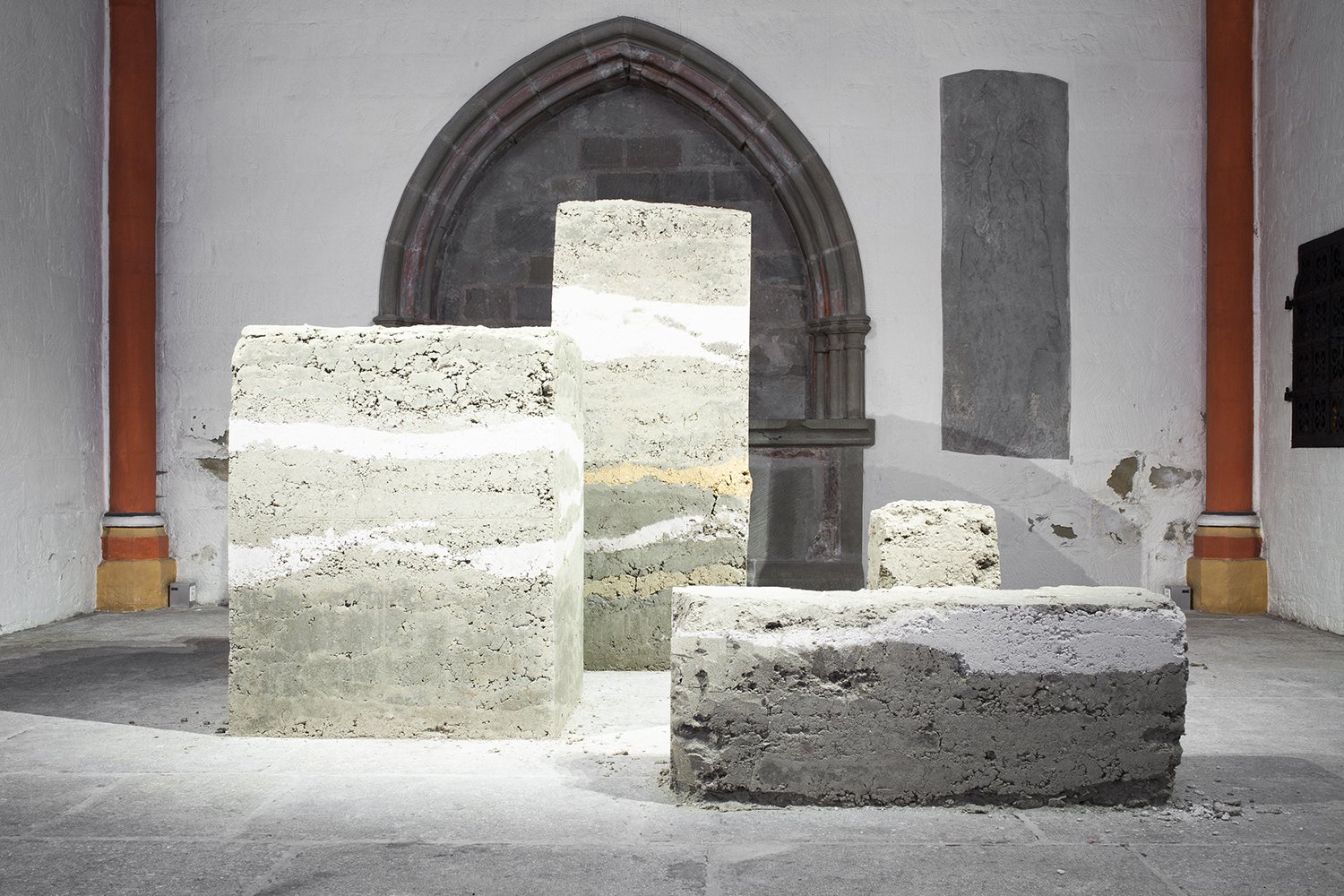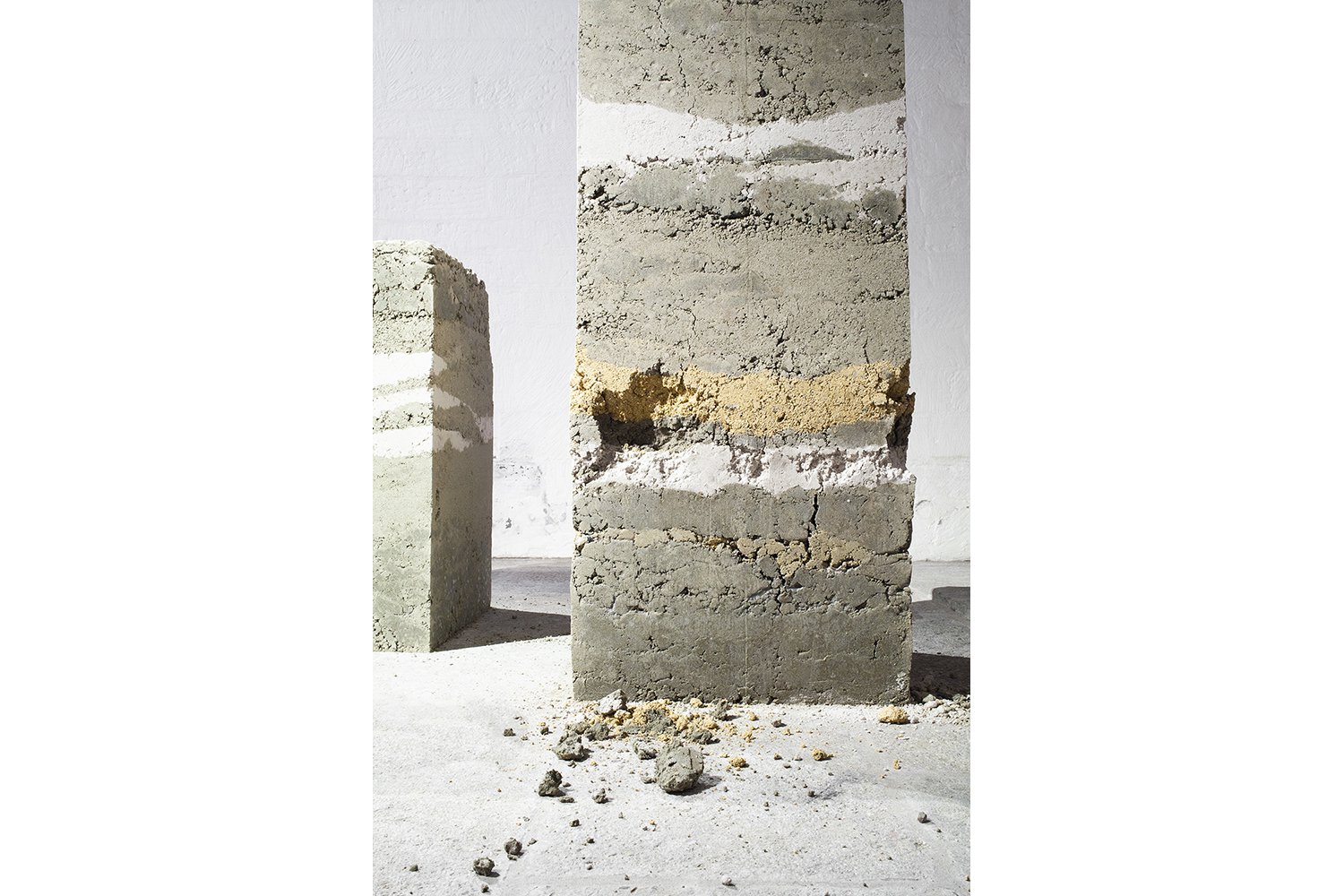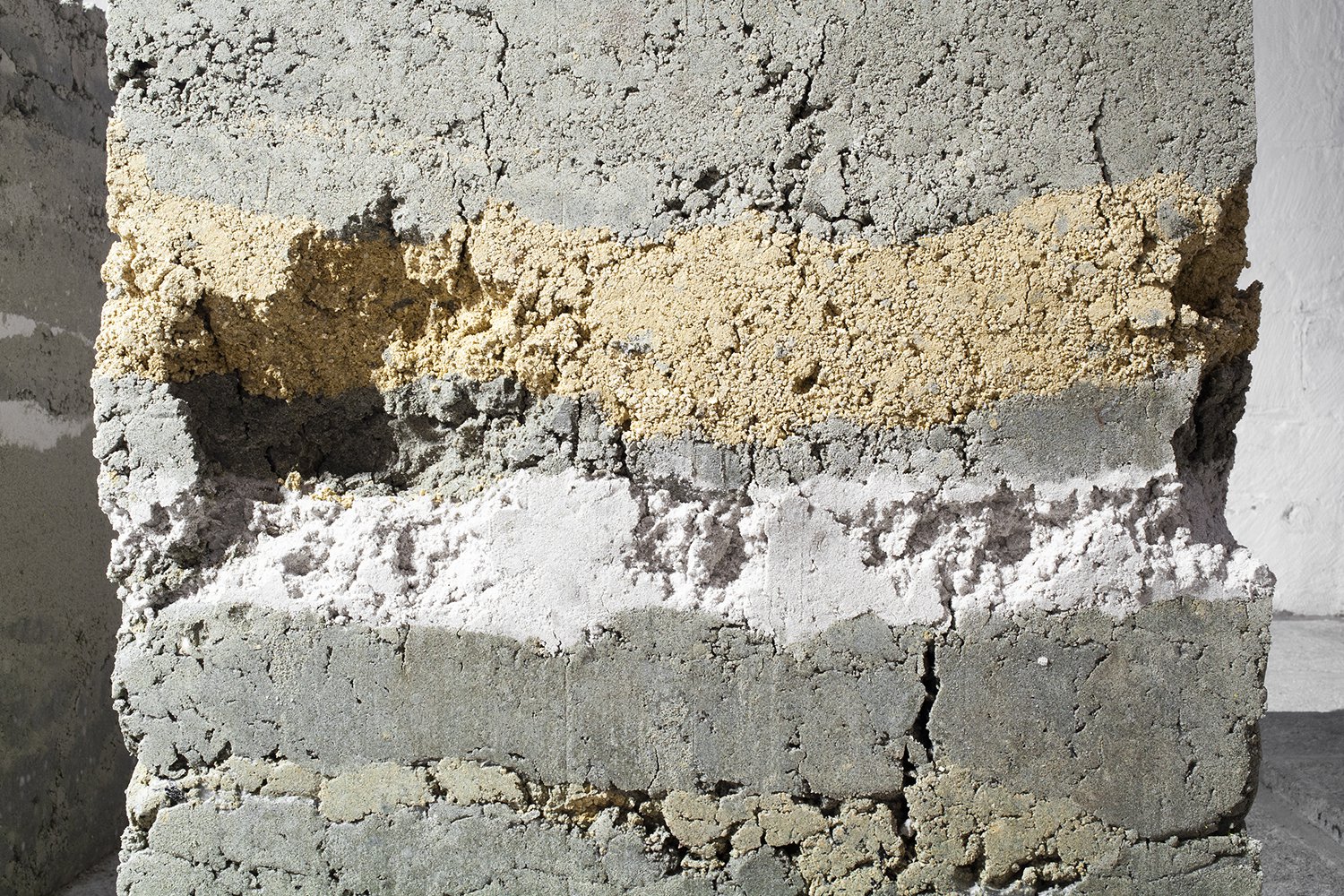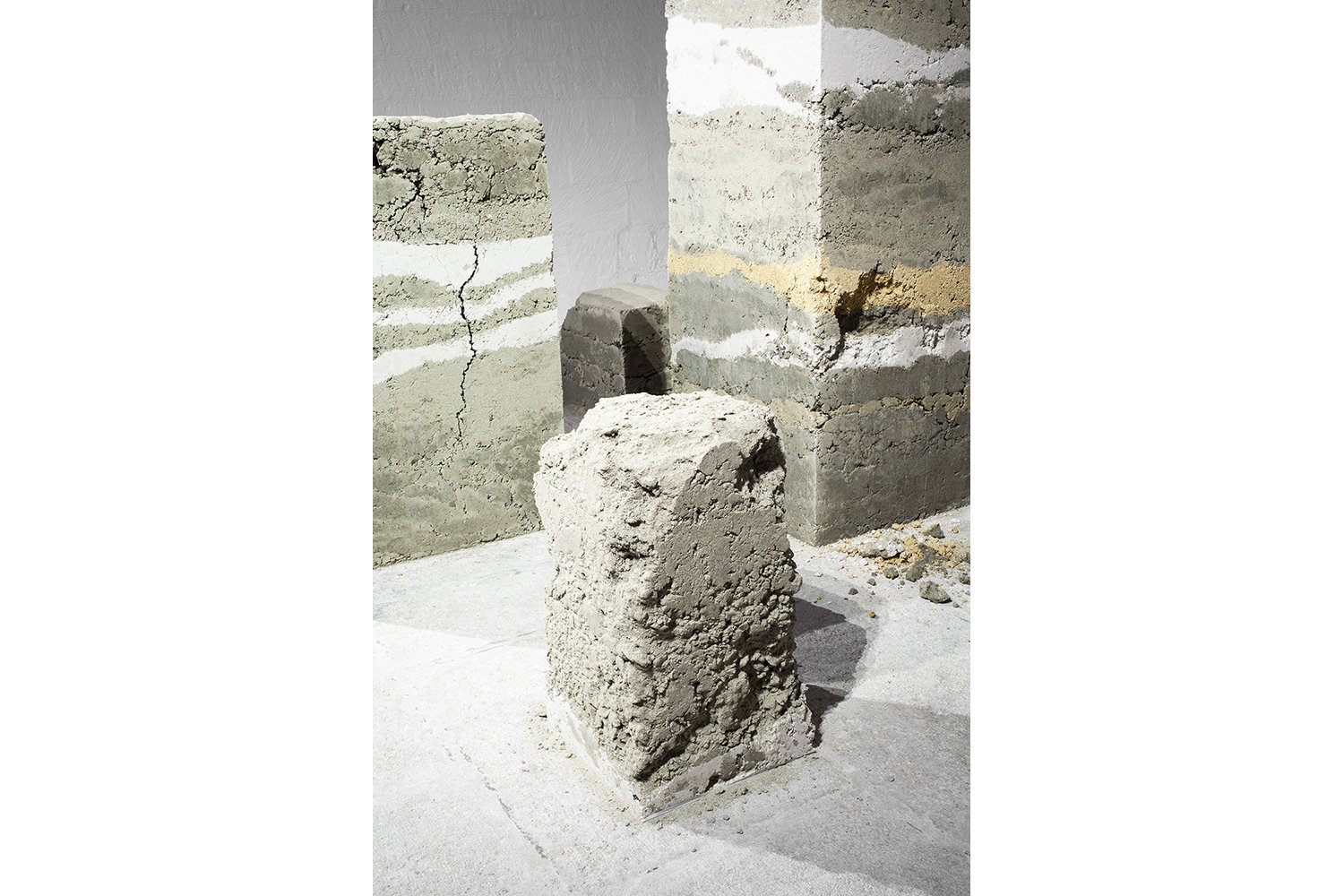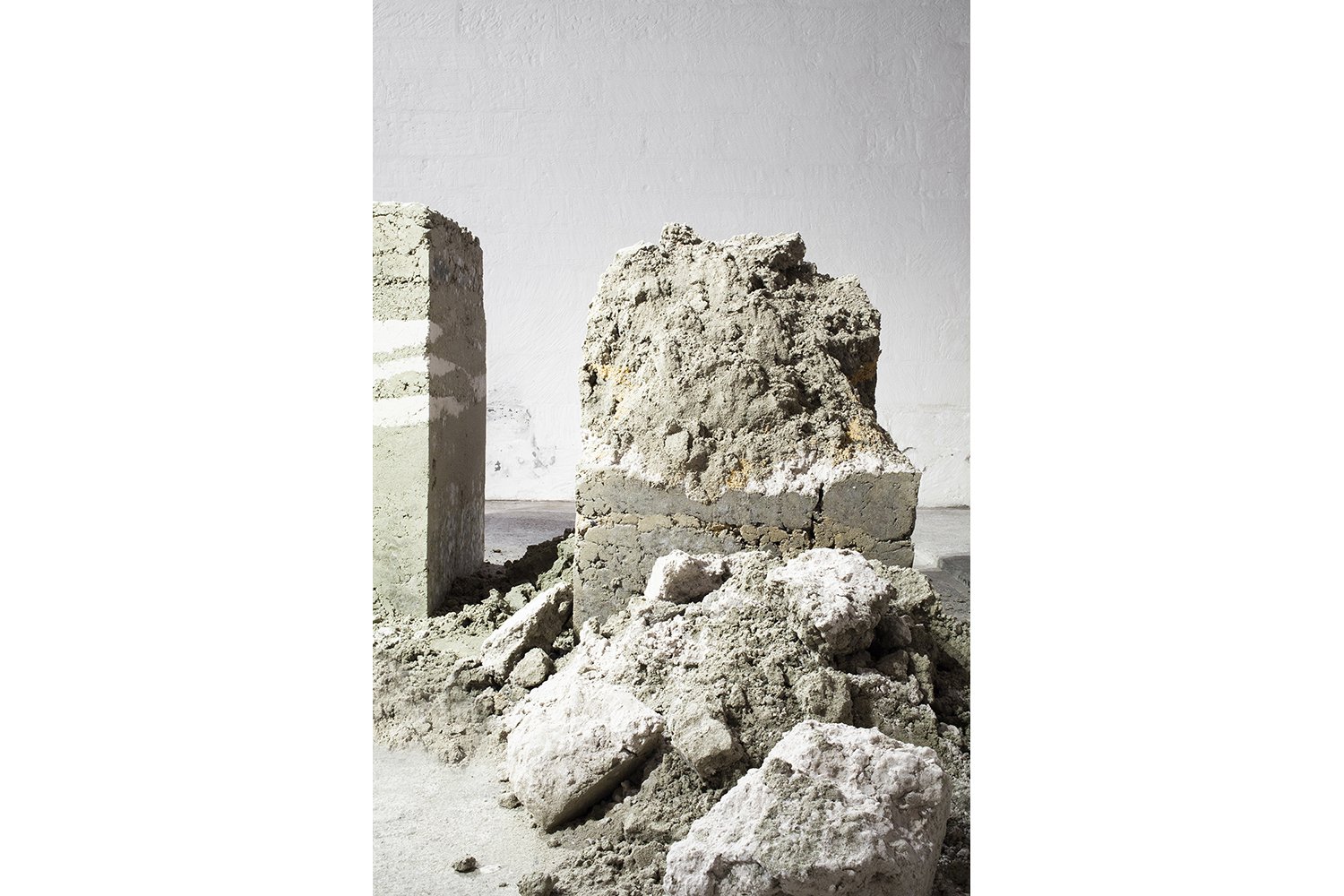Microorganisms were the first living beings to populate the Earth. They shaped and modelled it. Futur âge de pierre (“Future Stone Age”) invites us into the little-known, yet fascinating world of these essential beings for life in the soil.
Here we are in the workshop of Sphingomonas elodea, a bacteria that transforms and sculpts sand into stone. Its concretions, formed over a few hours, imitate the molasse of church walls. Its work lies at the crossroads of mineral and organic, monumental and microscopic, and geologic and biologic time scales. Throughout the exhibition, the monoliths will be subjected to a form of erosion through contact with the visitors, and their contours will gradually be shaped by these interactions.
In this petrified garden, life seems absent, and yet it is precisely life that is at work here.
A conference will take place on the 24th of August at 14:00 in Saint-François Church to learn more about the constructive properties of microorganisms. Detailed program on our agenda.
Authors
Manon Briod, designer (CH)
Florian Fischbacher, journaliste (CH)
Mathieu Pochon, ingénieur en environnement (CH)
Partners & Implementation
Hackuarium Ecublens
List of Plants and Materials
Gomme gellane, biopolymère produit par la bactérie Sphingomonas elodea, et sable
